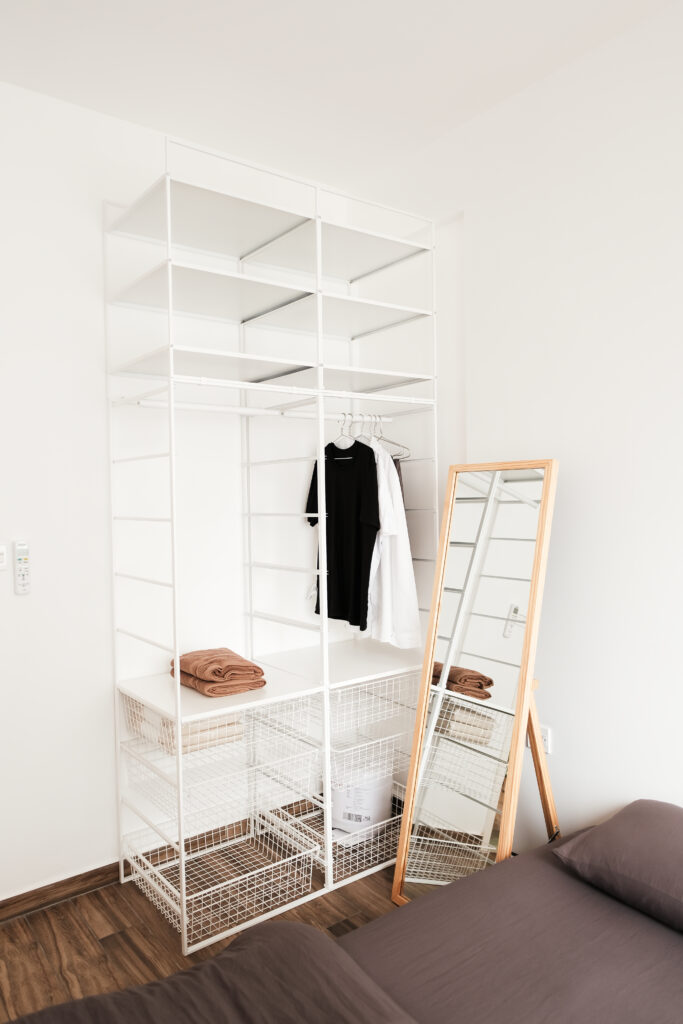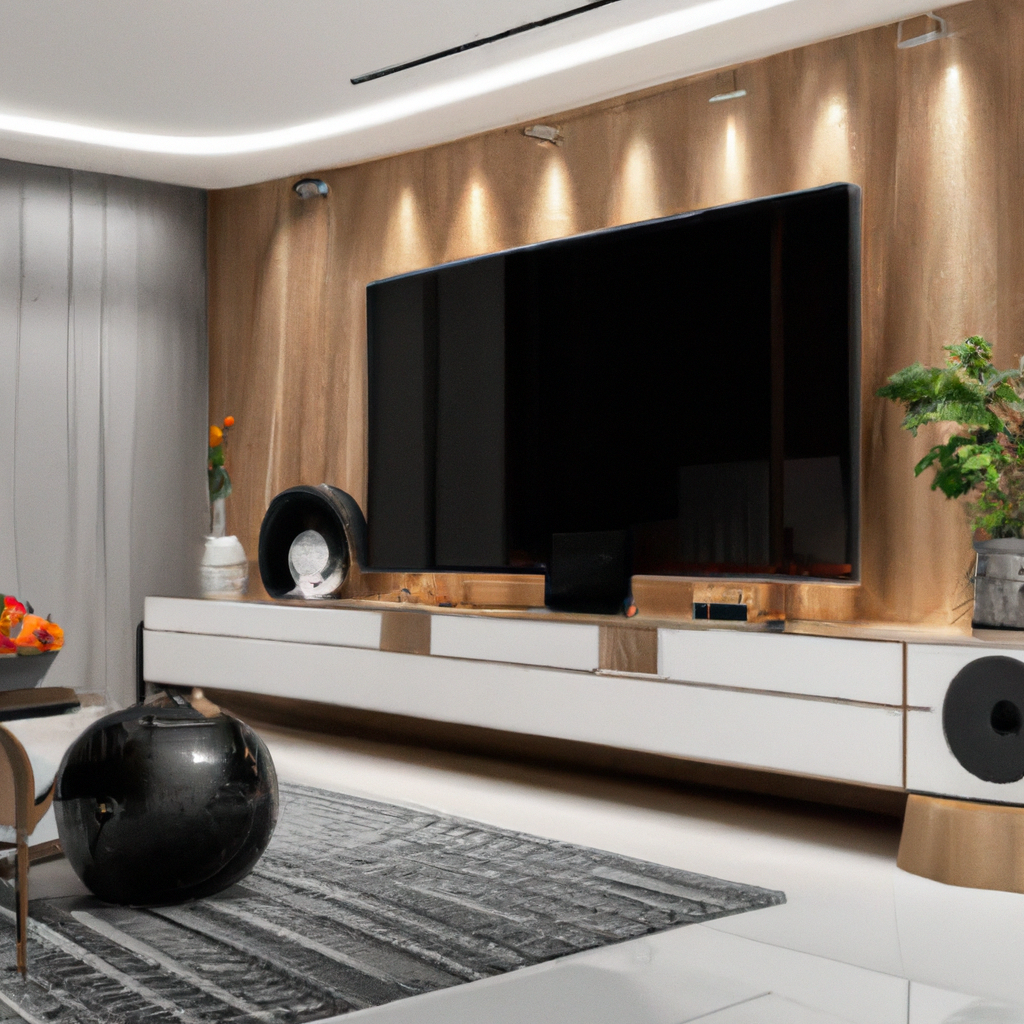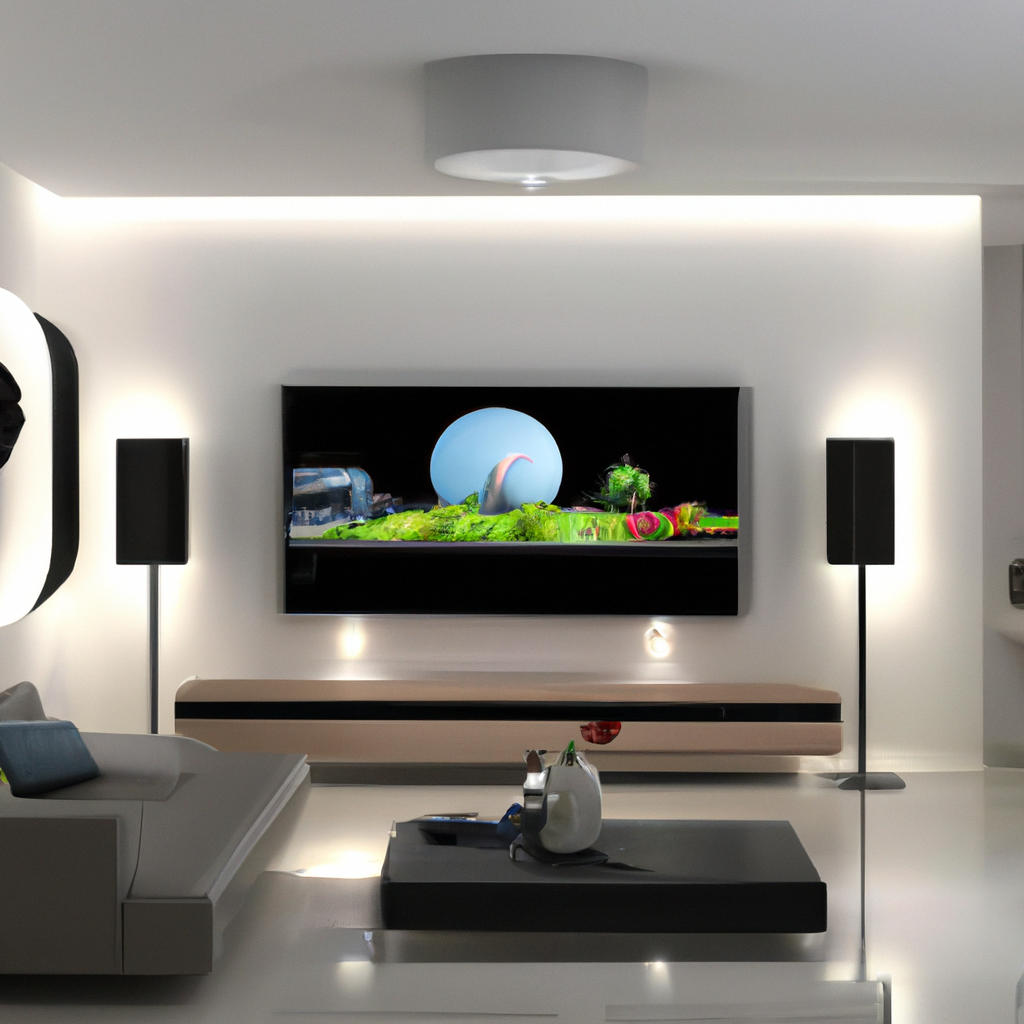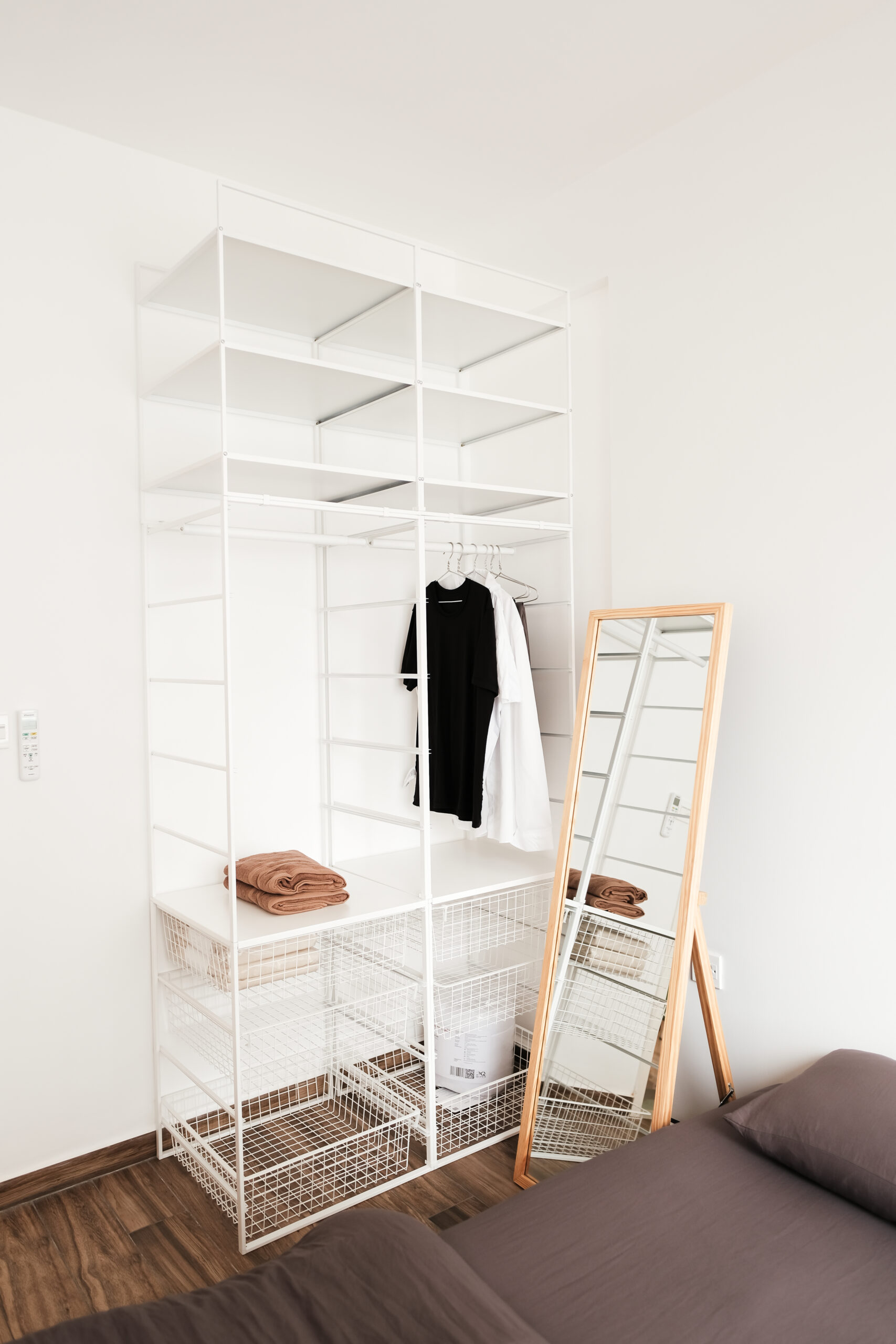Imagine transforming your living room into a sophisticated, state-of-the-art home theater system that will impress both you and your guests. In this article, we will guide you through the simple process of setting up a smart home theater system in your own living room. From selecting the perfect equipment to arranging the speakers for optimal sound, we will provide you with all the tips and tricks you need to create the ultimate movie-watching experience right at home. So get ready to elevate your entertainment to a whole new level and become the envy of all your friends with your impressive smart home theater setup!

Choosing the Right Location for Your Home Theater System
When setting up a home theater system, one of the most important considerations is the size and layout of your living room. Take into account the dimensions of the room and the placement of windows, doors, and other furniture. You want to ensure that you have enough space to comfortably accommodate all the components of your home theater and that there is enough room for seating.
Before you start placing the equipment, it is crucial to find a suitable wall or corner for the screen. This will be the focal point of your home theater, so choosing the right location is essential. Consider factors such as wall color, viewing angles, and the distance from the seating area. Additionally, think about any potential obstacles or lighting sources that could affect the viewing experience.
Lastly, make sure there is enough space for seating and equipment. Measure the available floor area and leave enough room for comfortable seating arrangements. Consider whether you want to have a dedicated area for seating or if you prefer a more open layout. Additionally, plan for the placement of your equipment such as the receiver, amplifiers, and media players. Ensuring there is enough space and accessibility for all the necessary components will make the setup process much smoother.
Selecting the Perfect TV or Projector
The centerpiece of any home theater system is the display. When choosing between a TV or a projector, consider factors such as personal preferences, budget, and the desired screen size.
If you prefer a more compact and straightforward setup, a TV might be the better option. TVs come in a variety of sizes and resolutions, so choose one that suits your preferences and fits within your budget. Consider factors such as the room size, viewing distance, and the display technology (such as OLED or QLED) to ensure you choose the best TV for your needs.
On the other hand, if you desire a truly cinematic experience with a large screen, a projector can be a great choice. Projectors allow you to have a massive screen size that can transform your living room into a mini movie theater. Consider the projector’s resolution, brightness, and throw distance when making your decision. Keep in mind that projectors may require a separate screen or a suitable projection surface.
Regardless of whether you choose a TV or a projector, consider the screen size and resolution. It’s essential to strike a balance between screen size and viewing distance to ensure an immersive experience without compromising picture quality. Take measurements, consult screen size calculators, and consider professional advice to help you make an informed decision.
Additionally, look for features like High Dynamic Range (HDR) and Smart TV capabilities. HDR enhances the contrast and color accuracy of the content, providing a more vibrant and lifelike picture. Smart TV capabilities allow you to access streaming services, browse the internet, and control your home theater system with ease. These features can enhance your overall viewing experience and offer added convenience.

Choosing the Right Audio System
An essential aspect of any home theater system is the audio. When selecting the right audio system for your living room, you have the option to choose between a soundbar or a full speaker setup.
A soundbar is a compact and convenient solution that can significantly improve your audio experience. It consists of multiple speakers housed in a single unit and can provide virtual surround sound. Soundbars are an excellent choice for smaller spaces or for those seeking a simpler installation process. Consider the size of your living room and the desired audio quality to determine if a soundbar meets your needs.
If you crave a more immersive audio experience and have the space for it, a full speaker setup may be the better option. This setup typically includes a combination of front, center, surround, and subwoofer speakers. A full speaker setup can reproduce sound more accurately and create a truly cinematic experience. However, it requires proper speaker placement and additional wiring.
When considering the audio format, ensure compatibility with your preferred content. Formats like Dolby Atmos and DTS:X offer a more immersive and three-dimensional audio experience. Check if your chosen audio system supports these formats, especially if you enjoy watching movies or playing games that utilize these advanced audio technologies.
Connectivity options are another crucial factor to consider. Look for audio systems that offer various connection methods, such as HDMI, optical, or Bluetooth. This will give you flexibility in connecting different devices and ensure compatibility with your existing equipment.
Lastly, choose speakers based on the size of your room and the desired audio quality. Larger rooms may benefit from larger speakers, while smaller rooms may require more compact options. Consider factors such as power output, frequency response, and sensitivity to find speakers that suit your room and provide the audio experience you desire.
Setting Up Smart Lighting
To create a truly immersive home theater experience, integrating smart lighting is a fantastic idea. Smart lighting allows you to control the ambiance and mood of your living room with ease. Here’s how you can set it up:
Consider using smart bulbs or smart switches for ambient lighting. Smart bulbs can be controlled remotely using a smartphone app or voice commands, allowing you to adjust the brightness and color temperature to suit your preferences. Smart switches, on the other hand, can be used to control multiple lights simultaneously and can be integrated into your home theater system for a seamless experience.
Sync the lighting with your home theater system for an enhanced viewing experience. Many home theater systems offer integration with smart lighting platforms, allowing you to configure the lighting to match the content playing on your screen. For example, when watching a movie, you can set the lights to dim automatically, creating a theater-like atmosphere.
Create different lighting scenes for various moods. Smart lighting systems often allow you to program different lighting scenes for different activities. You can have a scene specifically for movie nights, another for gaming sessions, and even one for casual TV watching. Experiment with different color temperatures and brightness levels to find the perfect lighting setup for each activity.
Setting up smart lighting can greatly enhance your home theater experience by adding an extra layer of immersion and customization. With the ability to control the lighting at your fingertips, you can truly create a personalized and captivating environment for your viewing pleasure.

Optimizing Acoustics in Your Living Room
Acoustics play a vital role in the overall audio experience of your home theater system. To optimize acoustics in your living room, consider the following tips:
Use curtains or acoustic panels to reduce echo. Curtains can help to absorb sound reflections, preventing excessive echo in the room. Opt for heavy or sound-dampening curtains that cover the walls near the speakers and screen. Acoustic panels are another effective solution, as they absorb sound reflections and improve sound clarity. Place them strategically on the walls or ceiling to enhance the acoustics in your living room.
Position furniture and speakers for optimal sound. The placement of your furniture and speakers can significantly impact the audio quality in your living room. Avoid placing furniture directly against the walls, as this may cause sound to bounce more and create unwanted reflections. Instead, position furniture and speakers to create a balanced soundstage and a clear audio experience. Experiment with different speaker positions and configurations to find the optimal setup for your specific room.
Add carpet or rugs to absorb sound reflections. Hard floors can cause sound to reflect and create unwanted echoes. To minimize this, consider adding carpets or rugs to the floor in your home theater area. Not only will this help absorb sound reflections, but it can also add a touch of warmth and coziness to the space.
Taking the time to optimize acoustics in your living room will significantly improve the audio experience of your home theater system. By reducing echo and enhancing sound clarity, you can immerse yourself fully in movies, music, and games.
Running Necessary Cables and Wires
To ensure a clean and organized setup, it’s important to plan and run the necessary cables and wires properly. Here are some tips to help you with cable management:
Determine the length and types of cables needed. Take accurate measurements of the distance between your devices and plan the cable routes accordingly. Consider the types of cables required for different connections, such as HDMI cables for video and audio, optical cables for audio, and Ethernet cables for network connectivity. It’s always beneficial to opt for higher-quality cables to maintain signal integrity and reduce the chances of interference.
Hide cables using cable management solutions. Unsightly cables can detract from the aesthetics of your home theater setup. Utilize cable management solutions such as cable raceways, wire channels, or cable sleeves to conceal and organize the cables. These solutions can help to create a clean and clutter-free look, enhancing the overall visual appeal of your living room.
Consider wireless options for a cleaner setup. If possible, explore wireless solutions for certain connections. For example, wireless HDMI transmitters and receivers can eliminate the need for long HDMI cables while maintaining high-quality video and audio transmission. Wireless speakers are also available, which can reduce the number of cables running across the room.
By carefully planning and organizing your cables, you can achieve a neat and professional-looking setup for your home theater system. Having a clean and well-managed cable setup not only improves the aesthetics of your living room but also makes maintenance and troubleshooting much easier in the future.

Configuring Your Home Theater System
Once all the components are physically set up, it’s time to configure your home theater system for optimal performance. Follow these steps to ensure everything is properly connected and calibrated:
Ensure all devices are connected properly. Double-check all the connections between your TV or projector, audio system, media players, and gaming consoles. Ensure that HDMI, optical, or other audio and video cables are securely plugged in.
Calibrate audio and video settings for optimal performance. Most home theater systems offer audio and video calibration features that help optimize the sound and picture quality. Follow the instructions provided with your system to calibrate the settings based on your room and personal preferences. Adjustments may include speaker levels, channel delays, display brightness, contrast, and color settings.
Set up streaming services and gaming consoles. If you plan on using your home theater system for streaming movies, TV shows, or playing games, set up the necessary streaming services and gaming consoles. Connect them to the internet and configure the display and audio settings to suit your preferences.
Take the time to properly configure your home theater system to ensure you get the best possible audio and video performance. Proper calibration and settings adjustment will enhance your overall viewing and listening experience.
Integrating Voice Control and Smart Hub
To add an extra level of convenience and automation to your home theater system, integrating voice control and a smart hub can be a game-changer. Here’s how:
Choose a voice assistant compatible with your system. Depending on your preferences, select a voice assistant such as Amazon Alexa, Google Assistant, or Apple Siri that is compatible with your home theater system. Voice assistants can control various aspects of your system, including turning on and off devices, adjusting the volume, and playing specific movies or music.
Connect devices to a smart hub for centralized control. A smart hub acts as a central control point for all your smart devices, including your home theater system. It allows you to control multiple devices with a single app or voice command. Connect your TV, audio system, smart lighting, and other compatible devices to the smart hub for easy and intuitive control.
Set up voice commands for easy operation. Once your voice assistant and smart hub are connected, you can create custom voice commands to control your home theater system. For example, you can say, “Hey Google, turn on the TV” or “Alexa, play my favorite movie,” and the system will carry out the command. Customize the voice commands based on your preferences and enjoy the convenience of hands-free control.
By integrating voice control and a smart hub into your home theater system, you can simplify the operation and control of various devices. The ability to use voice commands to control your system adds an extra layer of convenience and can enhance the overall user experience.

Adding Comfort and Convenience Features
To further enhance your home theater experience, consider adding comfort and convenience features to your living room setup. Here are some ideas:
Install motorized curtains or blinds for light control. Motorized curtains or blinds can be controlled remotely, allowing you to easily adjust the level of natural light in your living room. This can help create a more immersive viewing experience by eliminating excess glare and reflections on the screen.
Use smart thermostats to maintain a comfortable temperature. Integrating smart thermostats into your home theater setup allows you to control the temperature of your living room with ease. Set your desired temperature or create schedules that automatically adjust the temperature based on your preferences.
Incorporate seating with built-in vibration or reclining. For the ultimate comfort during movie nights, consider investing in seating with built-in vibration or reclining features. These features can enhance the immersive experience and make your movie-watching sessions even more enjoyable.
By adding comfort and convenience features, you can create a truly luxurious and personalized home theater experience. Tailor the setup to your preferences and make every movie night or gaming session a memorable one.
Creating a Universal Remote Experience
Managing multiple remotes can be a cumbersome task. To simplify the operation of your home theater system, consider investing in a universal remote or a smart remote app. Follow these steps to create a universal remote experience:
Invest in a universal remote or smart remote app. A universal remote consolidates the control of multiple devices into a single remote, simplifying the operation. Alternatively, you can use a smart remote app on your smartphone or tablet to achieve the same result.
Program and customize the remote for all devices. Once you have a universal remote or a smart remote app, program it to control all the devices in your home theater system. Follow the instructions provided and ensure that all the necessary functions are assigned to the appropriate buttons or virtual controls.
Opt for a remote with voice control feature. Some universal remotes or smart remote apps offer voice control capabilities, allowing you to navigate through your home theater system using voice commands. This can further enhance the convenience and ease of operation.
By creating a universal remote experience, you eliminate the hassle of managing multiple remotes and simplify the operation of your home theater system. With a single remote or app, you can control all your devices effortlessly and enjoy a seamless viewing experience.
In conclusion, setting up a smart home theater system in your living room involves careful consideration of various factors. From choosing the right location and display to optimizing audio and acoustics, every aspect plays a crucial role in creating an immersive and enjoyable experience. By following the tips and suggestions in this article, you can create a personalized home theater system that meets your specific needs and preferences. Whether you’re watching movies, playing games, or simply relaxing with your favorite TV shows, your smart home theater system will provide you with endless entertainment possibilities.
